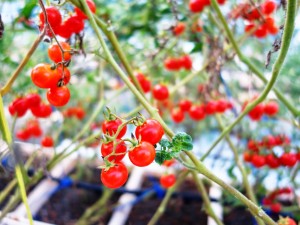Rooftop gardens have increasingly becoming a trend in the housing estates, hotels and corporate buildings. All these are mainly due to the promotion of sustainable living and conservation of nature by the government agencies. The Building and Construction Authority (BCA) Green Mark scheme was implemented in 2005 to create a rating system to evaluated the environmental sustainability of the building. This sparks of industries interest in trying to reduce their carbon footprint by using sustainable materials, installing energy efficient appliances and increasing green spaces in the building. One of the more innovative ways is to build a roof top garden at the top of the building.
Green roofs serve many purposes – helps in storm water management as water can be stored by the substrates, mitigate the Urban Heat Island effect that is a major concern in cities, increase recreational spaces for the community. However, there are also many speculated cons about rooftop gardens. It will increase the cost of water drainage systems, increase insurance costs due to possible accidents that can happen at a high rise building and also the weight of structures which can put a strain on the building.
Now the problem comes with regards to practicality and feasibility issues. Is it worth spending so much capital on rooftop gardening and maintenance as compared to investments in other areas of maintenance and expansion such as the reservoirs, streetscapes and nature corridors ? This boils down to different perspective and what is best for the country. Personally, from the society perspective, I feel that green roofs are still a rather novel idea which is attractive to people and can play a significant role in the well-being of individuals.
Having said that, rooftop gardens do actually have the means to generate revenues even though rooftop farming is still not a common sight in Singapore. Singapore’s first commercial aquaponic rooftop farm on the top of the *SCAPE building in Orchard is run by Comcrop (a social enterprise). They supply vegetables and herbs to F&B outlets and hotels nearby which has significantly minimized carbon footprint. This initiative has been a success every since its implementation.
Fig 1. First commercial rooftop garden in Singapore. (Photocredit : Nicole Poi)
 Fig 2. Wide variety of tomatoes were planted from heirloom tomatoes to cherry tomatoes.
Fig 2. Wide variety of tomatoes were planted from heirloom tomatoes to cherry tomatoes.
(Photocredit: Nicole Poi)
What are your thoughts about rooftop gardening? Do you think that it is sustainable and worth the effort?
References
http://www.todayonline.com/singapore/spores-1st-rooftop-farm-aims-supply-produce-fb-outlets
http://www.bca.gov.sg/GreenMark/others/3rd_Green_Building_Masterplan.pdf
https://www.bca.gov.sg/greenmark/others/sg_green_buildings_tropics.pdf
http://www.mewr.gov.sg/ssb/files/ssb2015.pdf
